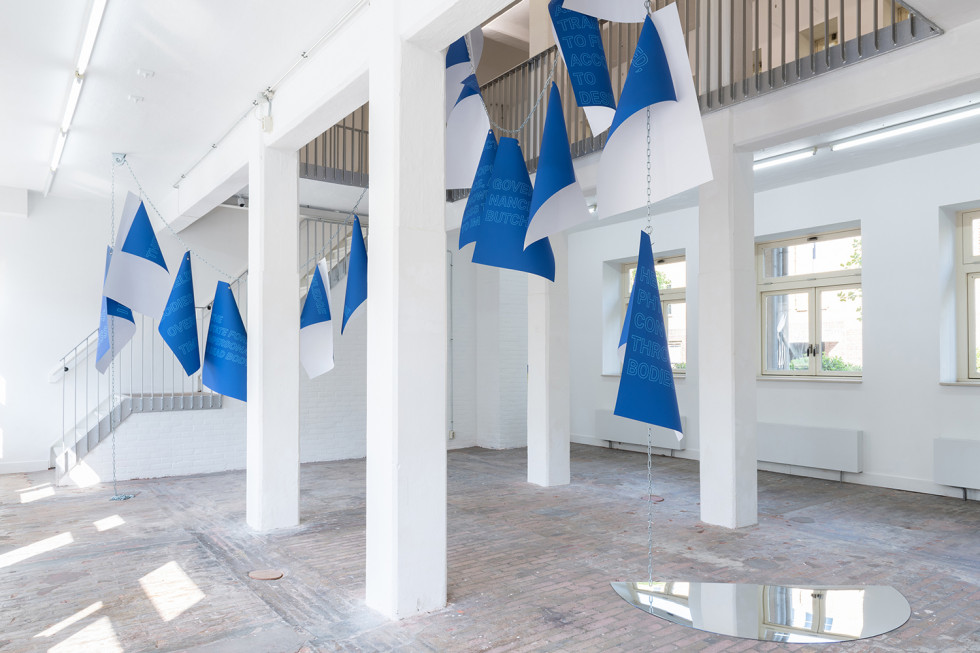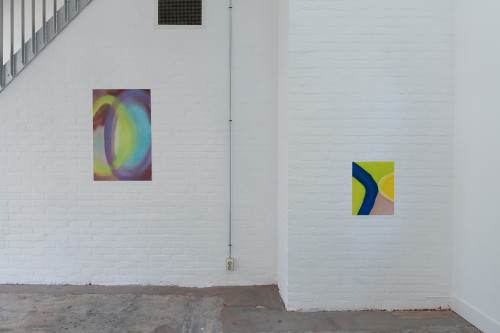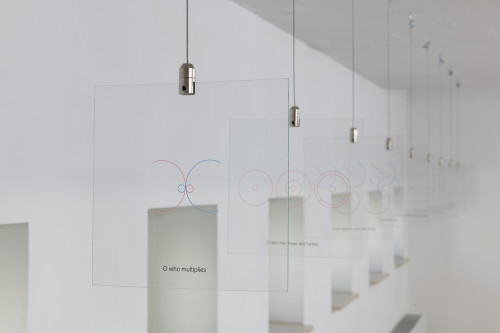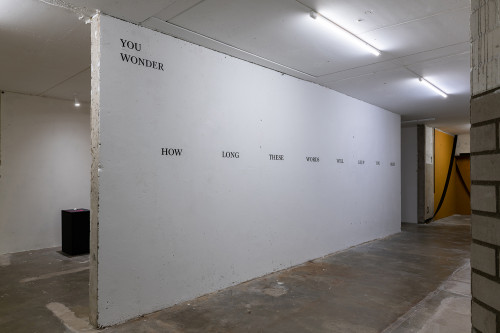
Sabrina Chou, LIMB TO LIMB TO LIMB, 2022, Photo: LNDWstudio
smoothing (lines into circles)
July 9 – August 28, 2022
MARIA BARNAS
SEPIDEH BEHROUZIAN
ANNABELLE BINNERTS
SABRINA CHOU
BAHA GÖRKEM YALIM
MAIKE HEMMERS
JOSÉ QUINTANAR
MEREY ŞENOCAK
curated by ALPER TURAN
smoothing (lines into circles) is an exhibition that seeks to grind down stark corners, flat bluntness, vertical systems, and short-cut assumptions through gestural explorations. Curling around textual and corporeal abstractions, and meandering along poetic and geometric condensations, the exhibition follows the journey of straight lines as they transform into poetic ones. The artworks are looking after the materialities of the language, of the body, and of the form simultaneously to create new languages to view, new bodies to read, and new forms of being together. Embodying new, existing or re-visited drawings, installations and sculptures by Maria Barnas, Sepideh Behrouzian, Annabelle Binnerts, Sabrina Chou, Maike Hemmers, José Quintanar, Merey Şenocak, and Baha Görkem Yalım, smoothing (lines into circles) proposes a circle as an unbreakable line of elasticity, an antidote to stiff edges. Through the ambiguity of poetry, the exhibition aims to defeat the rigidity of the idea and to give poetry a form and a body. Instead of mono-entities with a monovalence, the artworks in the exhibition are composed of multi-pieces in collectivity; each dismembered element serves as an utterance, a letter, a page of a book, a member of a body, a disjointed architectural unit, this time coming together in a different constellation, in a new order, and in a foreign alphabet. By way of repeating the same form to have a new gesture, iterating the same gesture to create a new form; or by fracturing a single entity into pieces, or scattering pieces to mold a unity; the works form cycles, circulating in circles.
smoothing (lines into circles) takes its inspiration from the curious letter O and its graphic form, which is also the pronoun for the third person singular in the Turkish language, a gender-neutral language. This queer and posthuman O in Turkish (which can be translated as he, she and it at the same time) blurs the distinction between male/female, animate/inanimate, and human/inhuman and makes those binary assumptions redundant. By combining this linguistic characteristic with the formal connotations of a circle, a zero, and a hole, O suggests a generative point of departure to revise the practices of seeing, identifying and pronouncing the other, the third-person, non-interlocutor, the foreign, the non-conforming. Taking the linguistic ambiguity of the pronoun O synchronously with its formal quality, the exhibition puts forward ambivalences, holes, and gaps. Resisting depictional, representational, digestible images and running against legible bodies, fixed positions, easy judgments, and quick glances, smoothing (lines into circles) provides an alphabet of gestures-in-forms that can be translated into various conditions under which one has to fight against the politics of flatlands in search for multi-dimensions.

Sabrina Chou, LIMB TO LIMB TO LIMB, 2022. Photo: LNDWstudio.

Annabelle Binnerts, Ghost Poem, 2022. Photo: LNDWstudio.

Maike Hemmers, Desire digests what moves it No. 3, 2020, and Untitled, 2021. Photo: LNDWstudio.

Sepideh Behrouzian, Circling the square: The transitional zone between repetition and difference, 2019–2022. Photo: LNDWstudio.

Sepideh Behrouzian, Circling the square: The transitional zone between repetition and difference, 2019–2022. Photo: LNDWstudio.

Merey Şenocak, A Picture of O, 2022. Photo: LNDWstudio.

Annabelle Binnerts, Ghost Poem, 2022. Photo: LNDWstudio.

José Quintanar, Landscapes. From 1 to 26. (A Dutch landscape of 26 days. May 2020) From 1 to 19. From 1 to 10. From 1 to 4., 2022. Photo: LNDWstudio.

Baha Görkem Yalım, Inclinations, 2022. Photo: LNDWstudio.

Maike Hemmers, An endless thread, 2022. Photo: LNDWstudio.

Maria Barnas, Things I Should Have Said, 2021–22. Photo: LNDWstudio.

José Quintanar, Landscapes. From 1 to 26. (A Dutch landscape of 26 days. May 2020) From 1 to 19. From 1 to 10. From 1 to 4., 2022. Photo: LNDWstudio.